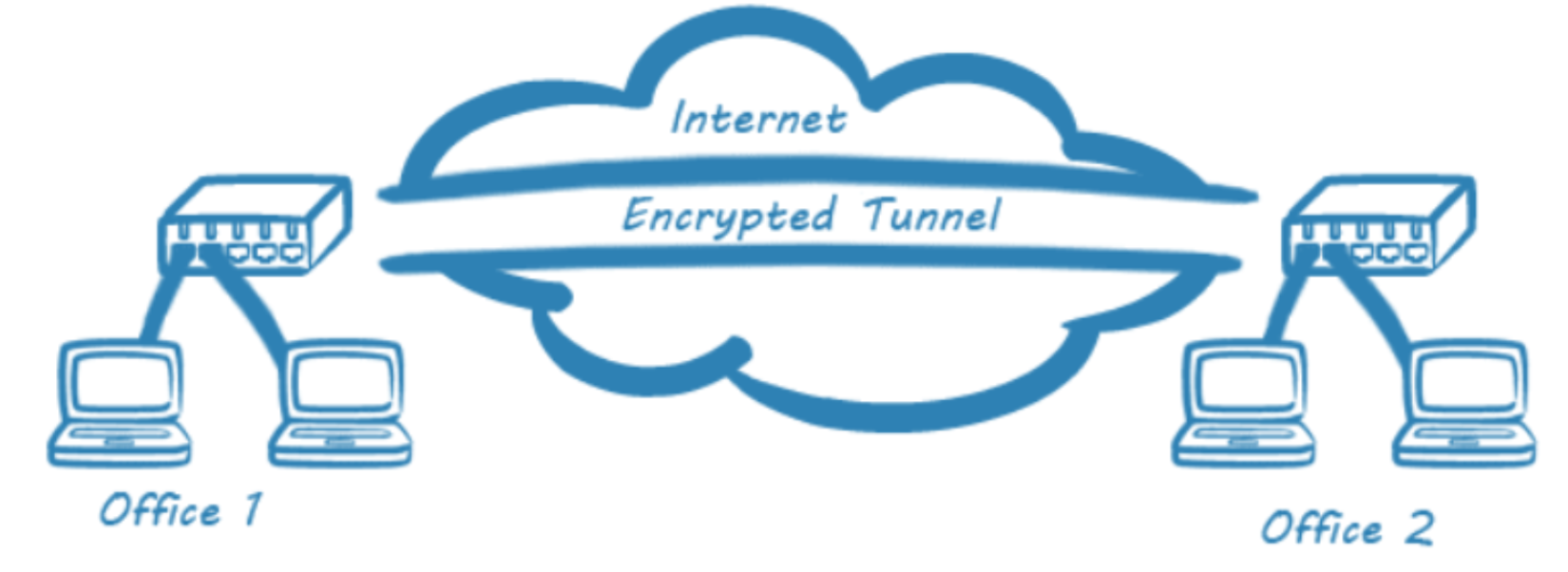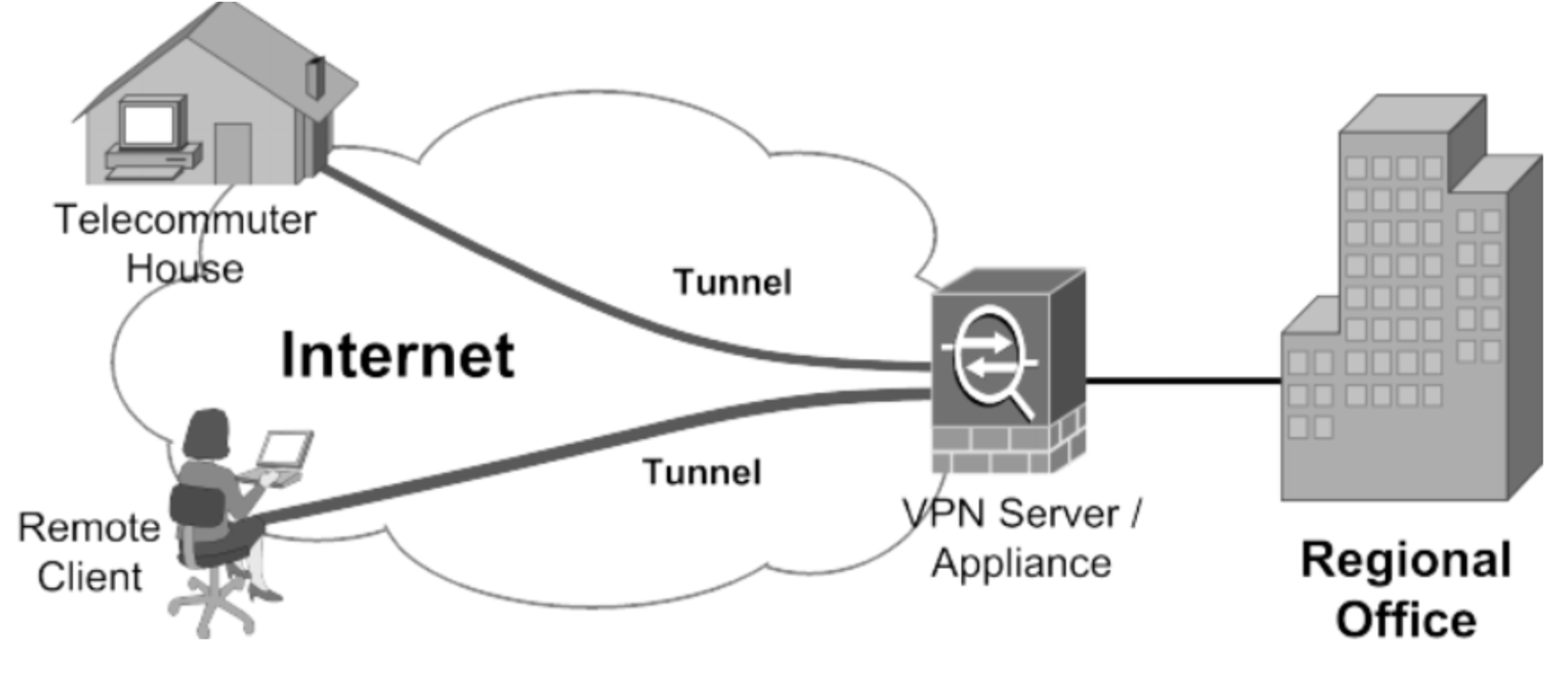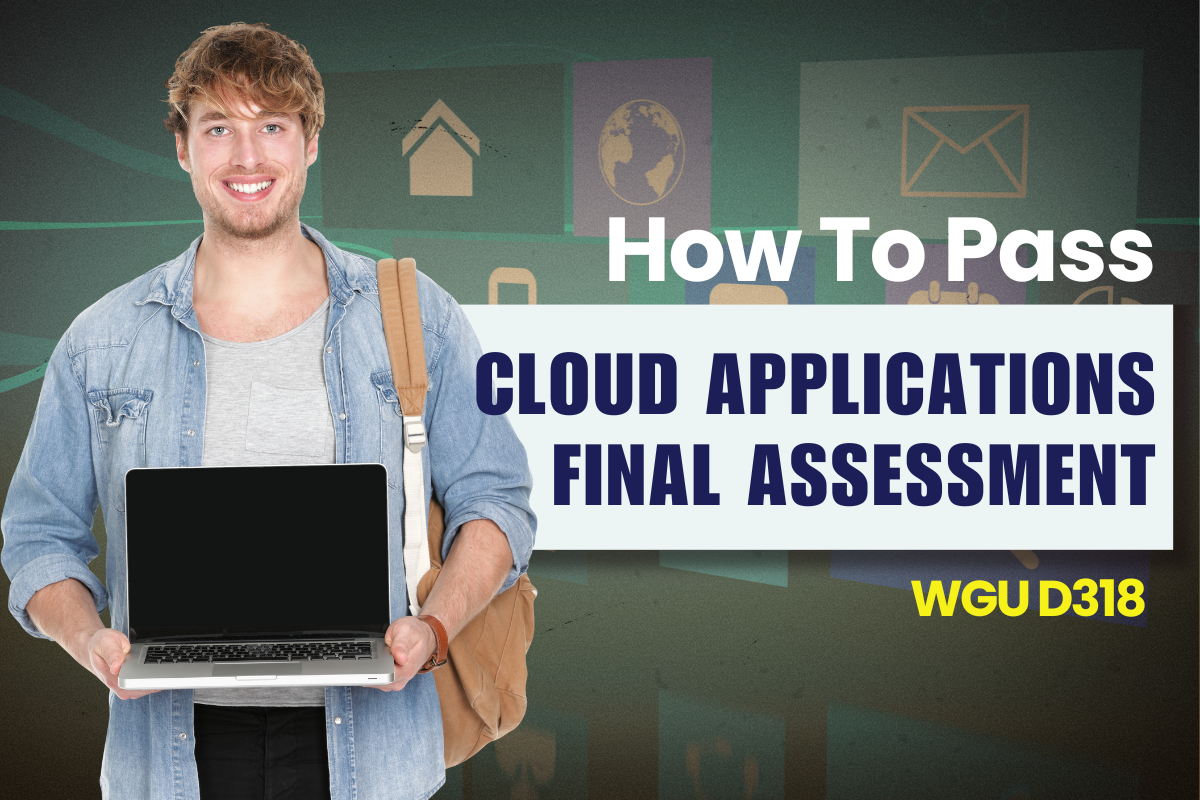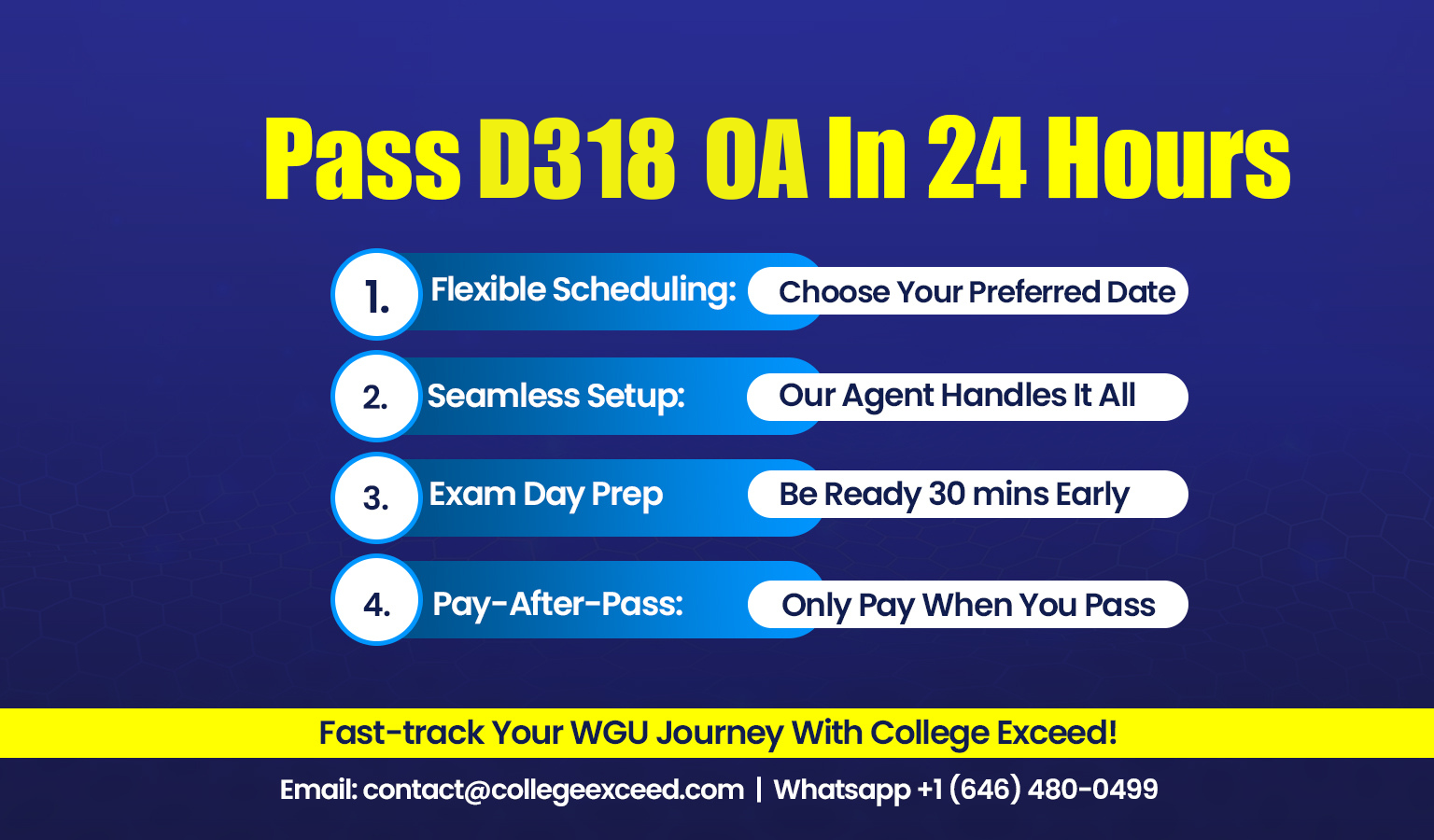Hello, everyone! Today, we’re diving into the module “Cloud Applications WGU D318 ”. In this article, we’ll cover the course materials, how to prepare for the final assessment, provide a study guide for the module, and discuss key topics. WGU D318 marks a significant milestone in your journey into Cloud Computing, so it’s a crucial step toward success. If you find it challenging, don’t worry – we’re here to support you every step of the way, right up to your end goal. This article will equip you with the best methods to study for your final assessment and boost your confidence before the exam. Wishing you the best of luck on your journey!
...
About Cloud Applications WGU D318 📖
In WGU D318, you’ll explore the exciting realm of cloud infrastructure and services. you’ll dive into designing cloud setups, ensuring strong security, mastering cloud storage, and streamlining cloud operations.
Cloud Applications offers various interactive learning activities to help you grasp course materials deeply. By actively participating in each lesson, absorbing content, and engaging with interactive elements and videos, you’ll set yourself up for success in the final assessment – CompTIA’s Cloud+ certification exam. You’ll learn how to configure, deploy, secure, maintain, and manage cloud environments effectively. With the Cloud+ certification, you’ll demonstrate expertise in creating secure cloud infrastructures that keep organizational systems and data running smoothly.
Cloud Applications prepare you for real-world challenges, too. From designing cloud structures and suggesting security measures to deploying cloud solutions for storage, networking, and security, you’ll finish the course with a robust skill set ready for complex cloud operations.
As you progress, you’ll become adept at troubleshooting cloud service issues, tackling networking, security, and performance concerns, and proving your capabilities as a competent cloud professional.
List of Competencies in Cloud Applications WGU D318:
- Competency : Designs Cloud Infrastructures and Services
- Competency : Recommends Cloud Security Solutions, Policies, and Procedures.
- Competency : Deploys Cloud Solutions.
- Competency : Manages Cloud Operations
- Competency : Troubleshoots Cloud Services Issues
...
Instructions on Preparing for the Final Assessment 👩🏻🏫
What sets this module apart is that the final assessment isn’t administered by WGU itself. Instead, the ultimate goal is to complete the CompTIA Cloud+ certification exam. After finishing your studies, you must take the CompTIA Cloud+ exam and submit your scorecard to WGU to receive credit for the module.
The CompTIA Cloud+ exam comprises approximately 75 to 85 questions in total, presented randomly from a question pool. These questions are divided into two categories: Multiple Choice Questions (MCQs) and Performance-Based Questions (PBQs). PBQs are scenario-based, requiring you to troubleshoot a given network to find answers, which typically takes around 15 minutes per question. The exam includes either 2 or 3 PBQs. The remaining questions (approximately 76) are multiple-choice. However, be aware that even though these are MCQs, some questions may have multiple correct answers, but you’re only allowed to choose one. The aim of such questions is for you to select the most correct answer with the least administrative effort to implement. Thus, it’s crucial to thoroughly read the exam questions before attempting to answer them.
You’ll have 1 hour and 30 minutes to answer all the questions, and your score will range from 100 to 900. To pass, you need to score above 750. If you find the exam daunting, fret not! We’re here to teach you the tips and tricks to best prepare for the challenge. In this article, you’ll find our Study Guide, meticulously crafted after intensive research on the course subject. Take some time to review our notes, and you’ll have a clear roadmap on how to approach this exam.
Study Guide for Cloud Applications WGU D318 📝
Welcome to the most crucial section of our article. Here, you’ll find our detailed study guide, specifically designed to help you pass the exam with minimal effort. You can either follow these steps precisely as we’ve outlined them, or you can extract the necessary information from our guide and incorporate it into your own study plan. Either way, we’re confident that you’ll discover all the details, tips, and tricks you need for your studies in this section.
Step 1
As mentioned above, the ultimate goal of Cloud Applications WGU D318 is to pass the CompTIA Cloud+ certification exam. Therefore, the Cloud Applications WGU D318 module is not a WGU-specific curriculum. You can find multiple guides and tutorials on the internet to help you study for the final exam.
The first step of your study guide is to clearly understand the exam objectives and content. Go through your WGU course material to identify the topics that should be covered in your studies and the objectives for each topic. We recommend noting down these objectives on a notepad to assess your knowledge going forward.
Step 2
Firstly, we recommend going through the “CertMaster learn for Cloud+ (Exam CV0-003)” book provided to you in the WGU course materials. This official textbook provided by CompTIA offers a clear picture and baseline knowledge required to pass the exam. It’s not necessary to study these contents thoroughly; just browse through them to get an idea of the content.
Now that you know what to expect from the course, you can use third-party study materials to further understand and clear up any confusion you have about the course contents. We recommend using the following resources to achieve this goal:
- ITproTV LinkedIn guide: This resource, provided by ITproTV on LinkedIn, serves as a guide for the CompTIA Cloud+ CV0-003 exam. It comprises a video series with over 20+ hours of content to revise any topics you may feel weak on. This study guide strictly follows the exam objectives and includes great scenarios and demos to help you understand the topics.
- CompTIA Cloud+ CV0-003 All-In-One: This resource can be found in your WGU Udemy resources section. It offers a comprehensive guide to the CompTIA Cloud+ course content delivered by a veteran in the IT industry. This course will further clarify any doubts you might have about the course content.
If you require additional study material for this module, you can find further resources in the “External Resources” section of this article.
Step 3
The next step of your journey is to prepare yourself for the final exam by going through practice exams. Before reaching this step, make sure you have a clear understanding of all the terms and definitions in the course contents. If not, go through the resources mentioned in Step 2 to revise your knowledge.
Below, we have listed the best practice exams you can find on the internet for you to attempt:
- Udemy CompTIA Cloud+ Practice tests: You can find this resource listed in the WGU Udemy resources section. This course provides you with 4 practice tests to attempt. These practice tests are considered to be as close to the real exam as possible. Most former students recommend this course over others.
- O’Reilly media practice tests (cv0-003): This resource is only available for a 7-day free trial on the website. Therefore, make sure to complete the practice questions before the deadline passes. Otherwise, you will be required to pay a fee to unlock the resource again.
Step 4
You are now ready to face the certification exam. The only thing left to do before that is to revise all the important concepts in the module one last time. To help you with this step, we have found two resources you can go through:
COMPTIA+ Notes: Here, you can find the short notes of a former WGU student. Go through the notebook and revisit the course content one more time.
Flashcards: You can use the flashcards provided in this link to assess your knowledge of each topic of the module.
Once you go through these resources, you should be confident that you will pass the final exam.
Step 5
There is nothing left but to attempt the final exam now. You have done all the hard work on this module. So passing the certification exam should be easy. Here, we will list some points that you need to keep in mind while you attempt the exam to help you prepare for the challenge:
- The final assessment is the CompTIA’s Cloud+ certification exam itself. This might be out of the norm compared to other modules, but fear not… Be confident and attempt the exam with a clear mind.
- Some MCQ questions have multiple correct answers even though you have to select only one option. In these cases, you should select the option with the least administrative effort to implement. In other words, you should select the most correct option.
- There will be a lot of questions on the subnetting topic. So revise the calculations before sitting for the exam. (You can find a short video on subnetting listed in the external resources section of this article).
- You should remember the acronyms clearly. The questions will refer to the acronyms instead of the descriptive terms.
- Some questions are more than 7 sentences long. So practice your reading skills if you want to save time.
With these in mind, you can sit for the certification exam. We wish you all the best!
...
Key Topics of Cloud Applications WGU D318 🔑
Cloud Storage Types
Block Storage:
Block storage is a type of storage where information is kept in blocks with fixed size, i.e. from a few kilobytes to several megabytes. Each block is a part of its own hard drive that can be managed by these blocks. In block storage, data is acquired and edited at the level of blocks, while the operating system operates as if it were a real disk. Such high-level granularity of data processing enables high-performance data access when low-latency and random access to data is required for example in databases. Block storage is widely used by enterprises and they depend on the SAN’s (Storage Area Networks) and cloud platforms’ block storage services.
File Storage:
While database management stores data in a relational structure, file storage organizes data by using folder and file hierarchy. It carries out filesystem operations at the file level logically. The functions performed here cover file storage and retrieval using the use of filenames. The metadata information regarding file instances including the attributes and permissions. This is stored by the file storage systems. The Data Lake method of storage makes the perfect choice for unstructured data, including documents, images, videos as well as user-generated content. Network-attached storage (NAS) systems, among many other things, are often mentioned in the context of file storage. These systems make it possible for users or applications to access the same files concurrently over a network. In cloud computing, there are storage services as a scalable and distributed file system that can address a huge volume of data, and it does support high throughput to applications having file-based workloads.
Object Storage:
Object storage is a storage architecture that manages data as objects, each consisting of data, metadata, and a unique identifier. Unlike block and file storage, object storage does not organize data into a hierarchical structure but stores objects in a flat address space, accessible through a unique identifier or key. This makes object storage highly scalable and allows for efficient data distribution across distributed systems. Object storage is well-suited for storing large volumes of unstructured data, such as multimedia files, backups, and archives. It is often used in cloud storage services like Amazon S3, Google Cloud Storage, and Azure Blob Storage, where it provides durability, scalability, and cost-effectiveness for storing and retrieving vast amounts of data over the internet. Object storage also facilitates features like versioning, replication, and lifecycle management, making it a versatile solution for various storage needs in modern IT environments.

VPN Types
Site-to-Site VPN:
Network-to-network VPN or site-to-site VPN is a type of connectivity that allows to form a VPN route between two networks such as organizations that are located in different cities and countries. thus each VPN uses a secure and encrypted communication channel between the routers or gateways of the networks that have been connected and the general public Internet is the medium for transmission. After the VPN tunnel is created, all data between the connected networks is encrypted and securely transmitted, which in turn allows the expansion of a private network beyond the local area network onto the internet. In the realm of business, Site-to-Site VPNs are frequently employed by companies that have several branch offices or data centers, which require data transmission securely between each other. It handles the situation where network resources, such as file servers, applications, and databases, are dispersed at remote locations. Additionally, it offers security against data breaches and data integrity breaches.

Point-to-Site VPN:
Point-to-Site VPN supplies individual users or devices with unrestricted internet access to a private network that remains protected. Unlike Site-to-Site VPN, which links entire networks, Point-to-Site VPN, defines a secure connection between individual client devices (e.g., laptop, smartphone, tablet) and a VPN Gateway. Thus, distant systems are allowed to access the internal network resources as if they were linked to it physically. PPVPN or point-to-site connections are typically utilized by organizations to provide a work-from-home situation, where the employees, contractors or partners can access corporate resources from any place with internet access. It generates a safe and encrypted passage for data transmission, preventing the interception of data or access by unauthorized persons. P2S VPNs are usually used conjunctively with other remote access solutions such as multifactor authentication (MFA) to strengthen security and enable only authorized users to connect remotely to the local corporate network.

Security Solutions for Cloud
- WAF (Web Application Firewall): Use it to protect web applications from various cyber threats like SQL injection and XSS attacks, comply with regulations, and mitigate DDoS attacks during high-traffic events.
- HIDS (Host-based Intrusion Detection System) and HIPS (Host-based Intrusion Prevention System): Employ them for endpoint security, real-time threat detection, and response in high-risk environments or where rapid threat response is crucial.
- CDN (Content Delivery Network): Utilize it to enhance website performance, scalability, reliability, and security by distributing content closer to users, offloading traffic from origin servers, and leveraging built-in security features like DDoS protection and web application firewalling.
...
Conclusion 📄
To ace the Cloud Applications WGU D318, you need a mix of skills and practical experience. Learn the basics of cloud computing, get to know popular cloud platforms and practice solving problems. Stay updated on what’s happening in the industry, keep learning, and join online groups to share knowledge. By staying dedicated and always learning, you’ll be well-prepared for exciting job opportunities in cloud computing.
In closing, we believe the study guide we shared will be helpful for you as you work towards mastering the Cloud Applications WGU D318. Keep using the tips and information we’ve provided, and you’ll be well on your way to success in cloud computing. Keep going, and you’ll get there!






